NIL
Ranking the best NCAA football transfer portal classes for 2025
Craig HaubertApr 29, 2025, 06:39 AM ET Close National recruiting analyst and analyst for ESPNU More than a decade of college and pro coaching experience. Graduated from Indiana and Nebraska-Omaha Open Extended Reactions Whether it was players joining rosters or new entries into the transfer portal seeking fresh opportunities, player movement was a key storyline […]
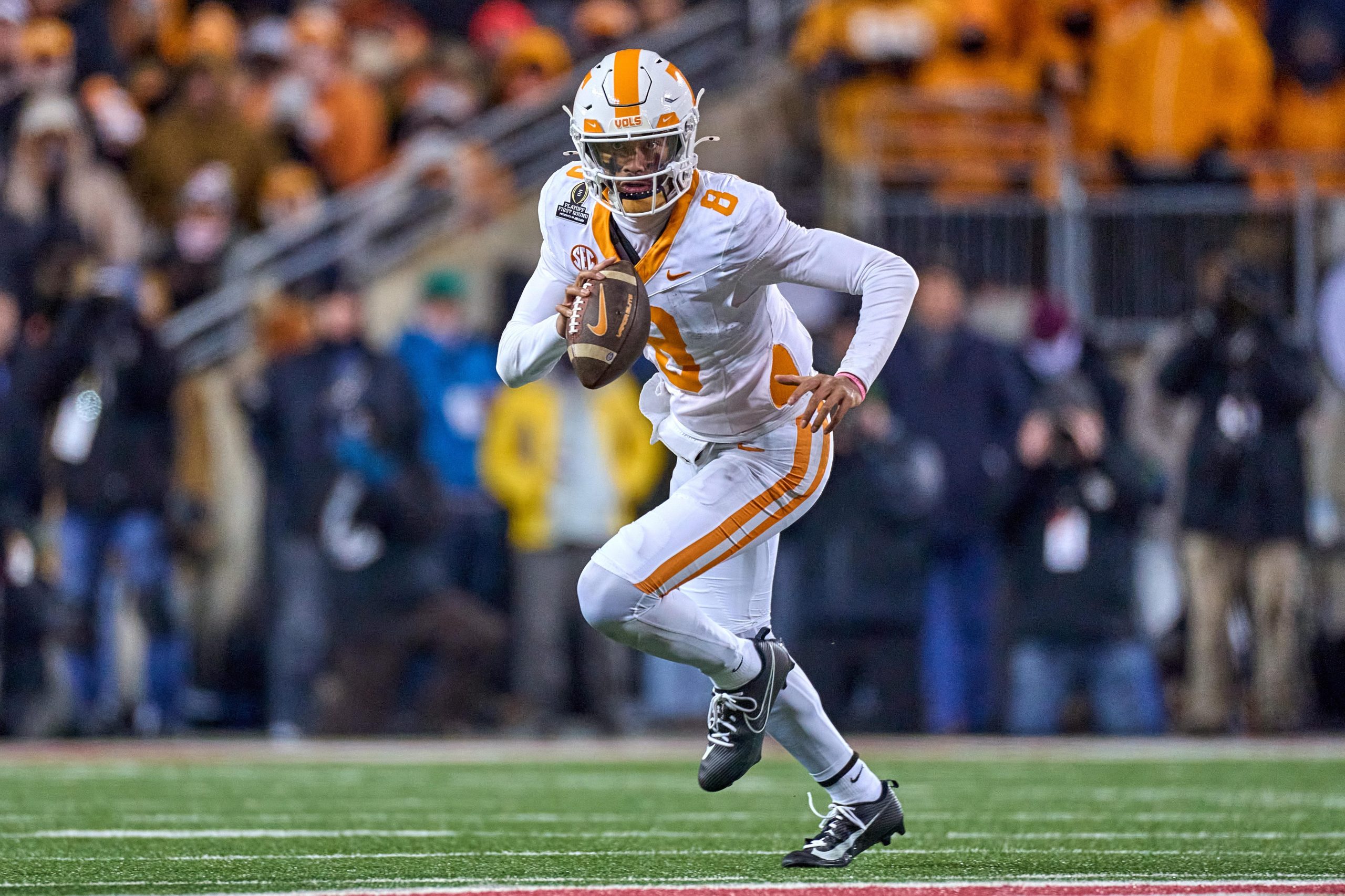

Whether it was players joining rosters or new entries into the transfer portal seeking fresh opportunities, player movement was a key storyline of the 2024 season. The second transfer window has now closed in 2025, and the focus will shift to how these movements will impact the College Football Playoff next fall.
Some players will continue to take visits and find new homes, but many teams already have made significant additions via transfers. The transfer route, though, is a two-way street, and losses can impact rosters as well — and that needs to be accounted for.
Here’s a look at the 10 teams that mastered the winter and spring portal windows to upgrade their rosters.

NIL
The new playbook – thehomewoodstar.com
George French is preparing as if he is already in the big leagues. As a rising senior at Homewood High School, French aspires to one day play Division I college football. “I keep my social media professional — like I’m already a big-time player — because that’s what I want to be,” the Patriots defensive […]

George French is preparing as if he is already in the big leagues.
As a rising senior at Homewood High School, French aspires to one day play Division I college football.
“I keep my social media professional — like I’m already a big-time player — because that’s what I want to be,” the Patriots defensive back said.
But he doesn’t just talk the talk — he also attempts to walk the walk.
“In day-to-day life, you have to watch what you do and make smart decisions,” French said. “You have to watch who you surround yourself with and where you go.”
French said his coaches at Homewood have educated and encouraged players on how to best present themselves to prospective schools.
“Our coaches emphasize that if you do everything you’re supposed to do — in the classroom, in the weight room and on the football field — you’ll start to see the results,” he said. “They tell us to control what we can and let everything else fall into place.”
Controlling what one can has become even more important in today’s college athletics landscape.
“There are fewer scholarship spots,” said ESPN recruiting analyst Tom Luginbill. “Now instead of divvying up all their scholarships at the high school level, now they’re going to get 12-14 guys out of the portal. The spots have become limited.”
SHIFTING SAND
Coaches are no longer building around potential. They’re buying certainty. Between the rise of the transfer portal, the explosion of Name, Image and Likeness (NIL) dollars, and the impending House v. NCAA court settlement — which could allow direct revenue-sharing paychecks from schools to athletes — the entire scholarship model has changed.
For high school seniors, that means fewer opportunities. Unless you’re elite, the message is clear: wait your turn — or get left behind.
In place of the old system is a new billion-dollar industry in which high school prospects are still commodities — just ones with less value than they held before the money started flowing.
Not all college programs play on the same field. The Power Four conferences — the SEC, Big Ten, Big 12 and ACC — have TV deals, booster collectives and NIL opportunities.
Below them are Group of Five schools like UAB, Jacksonville State or Troy — with fewer scholarships, smaller budgets and less exposure. Then come FCS, D2 and junior colleges, where many now land by necessity.
THE PORTAL JAM
For decades, high school football was the bedrock of college recruiting. Talent rose, coaches scouted, scholarships followed and dreams materialized on National Signing Day.
That world is gone.
It started with COVID. In 2020, the NCAA granted all athletes an extra year of eligibility. That decision created a massive traffic jam. Fifth-year seniors stayed. Sixth-year players reclassified. Scholarships that would have gone to high school seniors disappeared.
Then came NIL. In July 2021, athletes could finally earn money off their name, image and likeness. But what was meant to reward marketability became a loosely disguised pay-for-play market.
“Monetary compensation is no longer based on results,” Luginbill said. “It’s not about ‘if I produce, schools will want me.’ Now, it’s ‘how much are you going to pay me to play here?’ There’s no accountability from the player’s side, and that’s not what NIL was intended for — certainly not in recruiting.”
At the same time, the transfer portal exploded. The NCAA removed the sit-out rule for first-time transfers, and a flood of player movement followed. A new reality emerged: Why recruit a high school senior you’ll have to develop when you can buy a 22-year-old with experience?
“Unless you’ve been tampered with or have significant production, you’re either transferring down or walking on somewhere,” Luginbill said. “The math doesn’t add up. There just aren’t enough roster spots. There is a false level of value that the kids place on themselves or the people around them place on them. We’re talking about thousands of kids.”
According to On3 Sports, more than 4,000 FBS football players entered the NCAA transfer portal during this cycle — and more than 1,600 are still looking for a home. In men’s basketball, 2,320 players entered the portal this spring, per Verbal Commits — a jump of more than 11 percent from last year, and nearly 2.5 times more than five years ago.
This isn’t just a revenue-sport issue. Since the NCAA eliminated its one-year sit-out rule in 2021, tens of thousands of athletes across all sports have entered the portal — many of them two, three or even four times. Each year of the NIL era has accelerated the cycle. In 2024, the NCAA opened the door to unlimited transfers.
Combine that with the backlog of COVID players, and the result is a recruiting funnel that narrows further every season. And it’s about to get even tighter, as schools prepare for revenue sharing and potential roster caps tied to the House settlement.
Coach Trent Dilfer came to UAB with a plan to build his program through high school recruiting — but that vision didn’t hold. He watched promising redshirt freshmen get poached, impact players leave mid-development and recruiting calendars shift. Now, he’s saving scholarships for older transfers. Like most coaches, he’s frustrated by the chaos and eager for structure.
“All I need is guardrails, all I need is boundaries, all I need is where it is,” Dilfer told Birmingham’s CBS 42. “I don’t care where the goal post is, just keep it stationary… Because right now this goal post is going around 360 degrees because there’s zero leadership, there’s zero boundaries, there’s zero guardrails.”
MANAGING EXPECTATIONS
But this isn’t just about numbers. It’s about expectations — and the widening gap between what kids believe they’re walking into and what actually waits.
For years, high school athletes have been surrounded by talk of NIL money, brand building and recruiting leverage. Highlight reels and camp circuits — all of it reinforcing the same narrative: play well, get noticed, get paid. But most never make it that far.
“High school kids now believe they’re entitled to compensation,” Luginbill said. “But the original intent was that if a college athlete… became a marketable commodity, they could earn income. That’s light years from what we’re
doing.”
Even for players who eventually cash in, the road usually starts somewhere less glamorous — a Group of Five school, a redshirt year, a position change, a climb.
“The transfer portal has made it harder for high schoolers to land spots at Power Four programs,” said Jim Cavale, CEO of Athletes.org. “Starting at a Group of Five school and working your way up may be the best path.”
BACK-END FALLOUT
While these dynamics affect every sport, the epicenter is football and men’s basketball — where the bulk of the money flows and the pressure to win immediately is highest.
According to research on signing day trends, once-powerhouse programs are producing fewer high-major
signees and more D2, JUCO and NAIA placements. In other sports — baseball, wrestling, lacrosse, even track — the scholarship slots are already shrinking. If roster caps go into effect, they may vanish altogether.
Whatever happens next — roster limits, direct pay, new NIL rules — the path for high school athletes is narrowing fast. And for players like French, that means more than just navigating offers. It means trying to stay in the game.
“It has been twice as hard for players in my class to earn attention, now that college coaches spend a lot of attention on portal guys,” French said. “That is why I have been preparing myself in all aspects of my life to be ready when the time comes.”
French has the tone of a player set out to prove he belongs.
“I know I need to be on the same level physically and mentally as those other guys,” he said. “That’s what drives me, and I push myself every day to reach that.”
Look for part two of The New Playbook in next month’s issue: Current college athletes from our communities reflect on navigating NIL transfers and what direct pay from schools could mean next.
NIL
NiJaree Canady, Texas Tech softball ride ‘selfless’ attitude to WCWS finals
Why Texas Tech, Texas will win 2025 WCWS It’s a Lone Star State Women’s College World Series this year, and reporter Jenni Carlson breaks down one reason Texas Tech will win and one reason Texas will win the WCWS. OKLAHOMA CITY — It took NiJaree Canady until the Women’s College World Series finals to admit […]

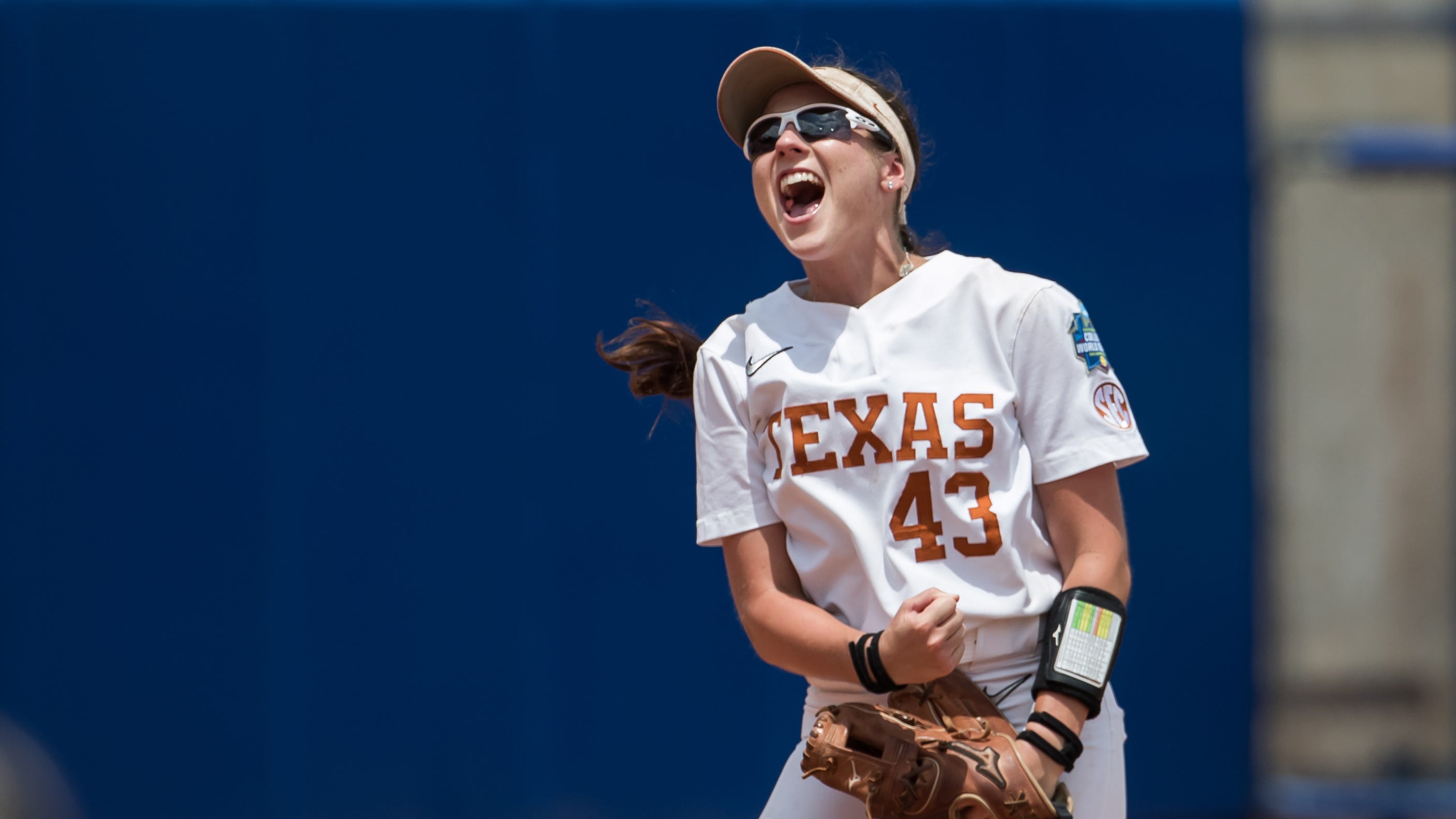
Why Texas Tech, Texas will win 2025 WCWS
It’s a Lone Star State Women’s College World Series this year, and reporter Jenni Carlson breaks down one reason Texas Tech will win and one reason Texas will win the WCWS.
OKLAHOMA CITY — It took NiJaree Canady until the Women’s College World Series finals to admit this season has been hard.
Not only has the best pitcher in the country been put under the microscope for her name, image and likeness deal with the Matador Club to join the Texas Tech softball team, Canady also spent the bulk of the 2025 season with an injury everybody knew she had, though the extent of which was hidden until recently.
On Monday, before playing Oklahoma in the semifinals, Gerry Glasco revealed to a radio show that Canady spent much of the year playing with a torn hamstring. The injury occurred in the Feb. 26 game at North Texas, where Canady, playing first base for the first time, stretched out to get the out. She came out of that game in Denton, and Texas Tech wound up losing 6-5 on a walk-off home run.
“I just know it was a really serious injury,” Glasco said Tuesday, “that was going to take eight or nine weeks to get over completely.”
Canady was back in the circle three days later, leading the Red Raiders to a 7-2 win over then-No. 5 Texas A&M. The injury, Glasco said, would have shut Canady down until she recovered had it been in her right leg. Since it was in her left, Canady was able to continue pitching but had to make concessions elsewhere.
Midweek bullpen sessions were eliminated, as was hitting, something that played a major factor in Canady’s decision to transfer from Stanford to Texas Tech. For about a month, Canady pitched in games, and that was about it.
“Honestly,” Canady said, “I think the results said it was worse than it was.”
Canady said the injury is a bit overblown, and she spent the better part of two months pitching through it. The million-dollar arm continued to excel in the circle, battling through obvious pain and discomfort. She never said anything about it.
During the time Canady was pitching on a torn hamstring, she totaled 114⅔ innings with a 0.98 ERA across 19 pitching appearances. That ERA, even with the injury, would rank as the best in the country.
“We didn’t talk a lot about it, but it was a significant setback,” Glasco said, “… and then to still have the results that she did, to show what a tremendous competitor and what a tremendous talent she was.”
After earning the game-winning sacrifice fly against Oklahoma, Lauren Allred said the team chose a word to live by this season. That was was selfless, and it exemplifies Canady pitching through the pain and not telling anybody about it.
“NiJa’s a tough competitor,” Texas Tech pitching coach Tara Archibald said, “a team-focused individual. I’ve never met a player with as much talent as NiJa has, who thinks about the team more than anything in the world, and it just says who she is.
“She didn’t have to battle through that. She didn’t have to play through that. But this was NiJa’s goal. NiJa wanted to win a national championship, and she knew if we lost those games in the middle of the year, we wouldn’t have a chance to do it and she was determined to put is in a spot to be able to do it, but that’s just who she is as a person and says a whole lot about her.”
Getting to the Women’s College World Series finals wasn’t an easy trek. Not only were the Red Raiders figuring themselves out, they were doing it with a hobbled workhorse. The only way it was going to work was with everybody doing their part, something Texas Tech’s roster has done throughout the postseason run.
“I think we’ve been playing selfless and playing for each other,” Allred said, “and that’s helped us get through all the tough games.”
Much has been made about what Canady has brought to Texas Tech, the softball team and the athletic department as a whole. Glasco said when the Red Raiders signed her, he was told nearly 1 million stories were generated around her NIL deal. But her value, the coach said, is incalculable.
“I think,” Glasco said, “when you look at how she endured injury, she endured a young team around her, or a new team around her and with a new coaching staff and went through with a new pitching coach, and then she’s got a new hitting coaching working with her on hitting, just total adjustments, but throughout all that, no matter what, she was just rock solid in the circle for us and provided us with that solid stone cold assassin out there in the circle that allowed us to grow and become a really good softball team at the end of the year.
“I think it even surprised us.”
Glasco likened Canady to Superman for her ability to compartmentalize everything around her and power on. Even Superman has a weakness, and while Canady will never complain about her circumstances — if she’ll tell anybody about them at all — getting to this point has been anything but a breeze.
“Honestly,” Canady said, “this year, it’s been hard, just for me personally. I’ll say this, too, I feel like we had a lot of road bumps, and this was not an easy ride.
“We actually were joking about it on the bus, if you would have asked us earlier in the year, earlier in the preseason if we would be two games away from hoisting a National Championship trophy, we would probably laugh. We took some hard losses early on.
“Honestly, just feel like we’ve just grown as a team. Part of the road getting here is peaking at the right time. I feel like we’re finally just catching our step, and we’re getting to know each other on the field, and I feel like we’re just playing for each other right now.”
2025 Women’s College World Series Championship
Best-of-three series at Devon Park, Oklahoma City
Wednesday, June 4
- WCWS finals Game 1: Texas Tech vs. Texas, 7 p.m., ESPN
Thursday, June 5
- WCWS finals Game 2: Texas Tech vs. Texas, 7 p.m., ESPN
Friday, June 6 (if necessary)
WCWS finals Game 3: Texas Tech vs. Texas, 7 p.m., ESPN
NIL
SDSU DUO CHOSEN TO ACADEMIC ALL-LEAGUE TEAM
Story Links SIOUX FALLS, S.D. — South Dakota State is represented by two individuals on the 2025 Summit League Softball Academic All-League Team which was announced by the conference office on Tuesday. Jackrabbits recognized among the 10 student-athletes honored were sophomore Akayla Barnard and senior Brooke Dumont. The 10 student-athletes that […]
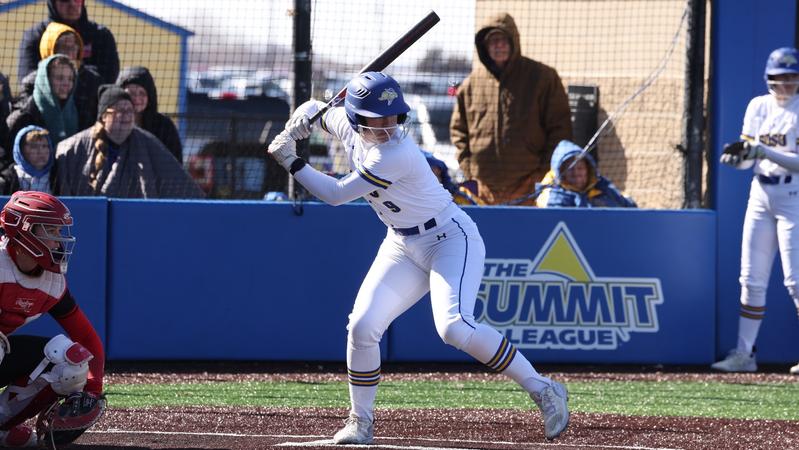
SIOUX FALLS, S.D. — South Dakota State is represented by two individuals on the 2025 Summit League Softball Academic All-League Team which was announced by the conference office on Tuesday.
Jackrabbits recognized among the 10 student-athletes honored were sophomore Akayla Barnard and senior Brooke Dumont. The 10 student-athletes that made the Academic All-League Team all had at least a 3.93 GPA.
Both Barnard and Dumont were First Team All-Summit League performers during the 2025 season. Barnard, an elementary education major, was selected to the Academic All-League Team for the first time in her college career thanks to 3.94 cumulative GPA. Dumont is now a three-time selection to The Summit League Academic All-League Team as she graduated with a 3.97 GPA from South Dakota State University with her degree in physical education/teacher education.
To be eligible for the Academic All-League team, a student-athlete must have a cumulative grade point average (GPA) of at least 3.30 (on a 4.0 scale), completed at least one full academic year at the current institution and participated in 50 percent of their team’s competitions, except pitchers who must have participated in 20 percent of their team’s total contests.
-GoJacks.com-
NIL
New Lawsuit Challenges High School NIL, Transfer Restrictions
New Lawsuit Challenges High School NIL, Transfer Restrictions Privacy Manager Link 0

NIL
SDSU DUO CHOSEN TO ACADEMIC ALL
Story Links Summit League Release SIOUX FALLS, S.D. — South Dakota State is represented by two individuals on the 2025 Summit League Softball Academic All-League Team which was announced by the conference office on Tuesday. Jackrabbits recognized among the 10 student-athletes honored were sophomore Akayla Barnard and senior Brooke Dumont. The 10 student-athletes that made the Academic All-League […]
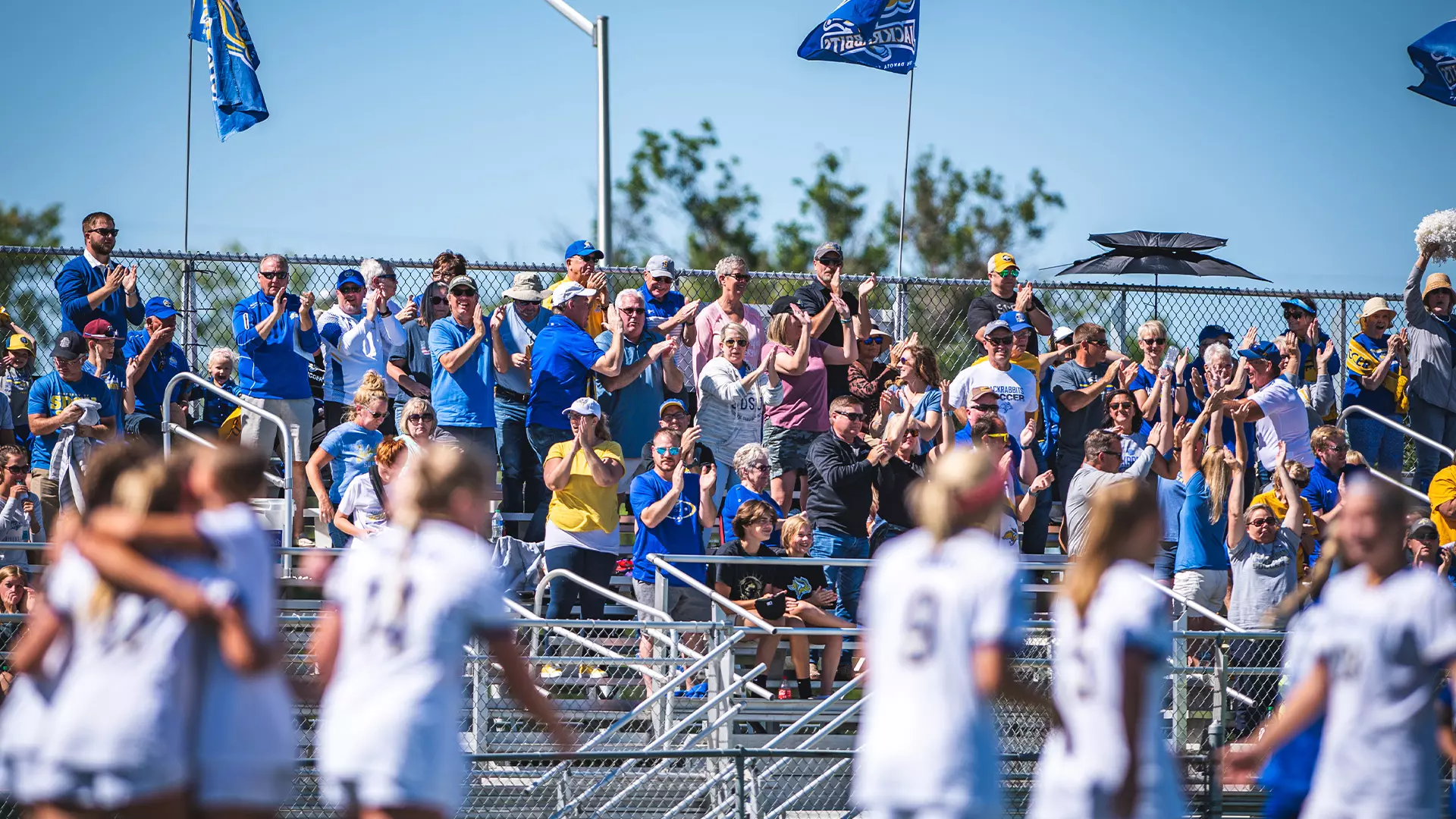


SIOUX FALLS, S.D. — South Dakota State is represented by two individuals on the 2025 Summit League Softball Academic All-League Team which was announced by the conference office on Tuesday.
Jackrabbits recognized among the 10 student-athletes honored were sophomore Akayla Barnard and senior Brooke Dumont. The 10 student-athletes that made the Academic All-League Team all had at least a 3.93 GPA.
Both Barnard and Dumont were First Team All-Summit League performers during the 2025 season. Barnard, an elementary education major, was selected to the Academic All-League Team for the first time in her college career thanks to 3.94 cumulative GPA. Dumont is now a three-time selection to The Summit League Academic All-League Team as she graduated with a 3.97 GPA from South Dakota State University with her degree in physical education/teacher education.
To be eligible for the Academic All-League team, a student-athlete must have a cumulative grade point average (GPA) of at least 3.30 (on a 4.0 scale), completed at least one full academic year at the current institution and participated in 50 percent of their team’s competitions, except pitchers who must have participated in 20 percent of their team’s total contests.
-GoJacks.com-
NIL
How the NCAA v. House Settlement Affects High School Athletes
Last fall, Whitman senior and football player Nate Sullivan was in touch with coaches at Virginia Tech, hoping for an opportunity to play for the program. The school then told him there was no spot for him on the team due to uncertainty surrounding the transfer portal and roster size. This kind of rejection is increasingly common […]
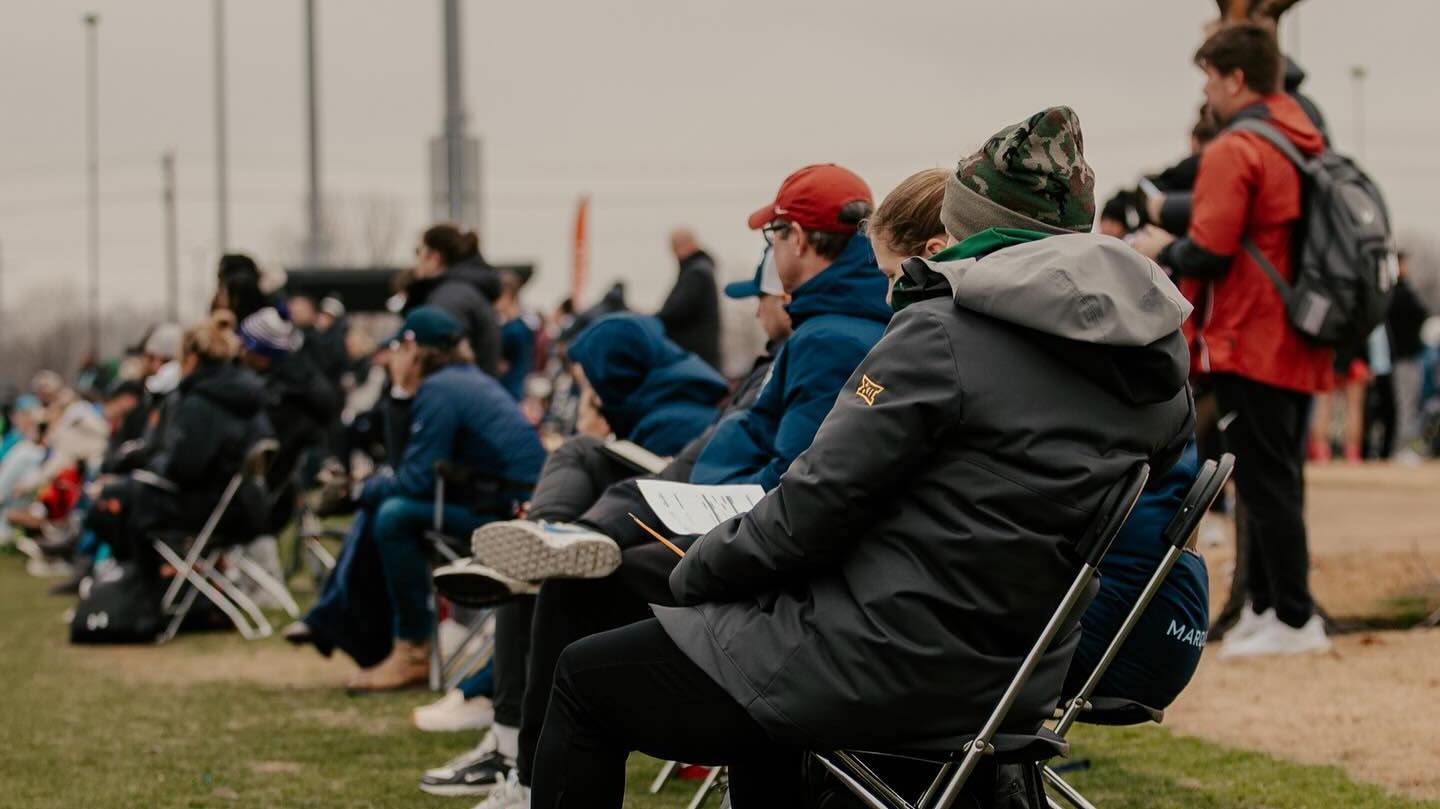
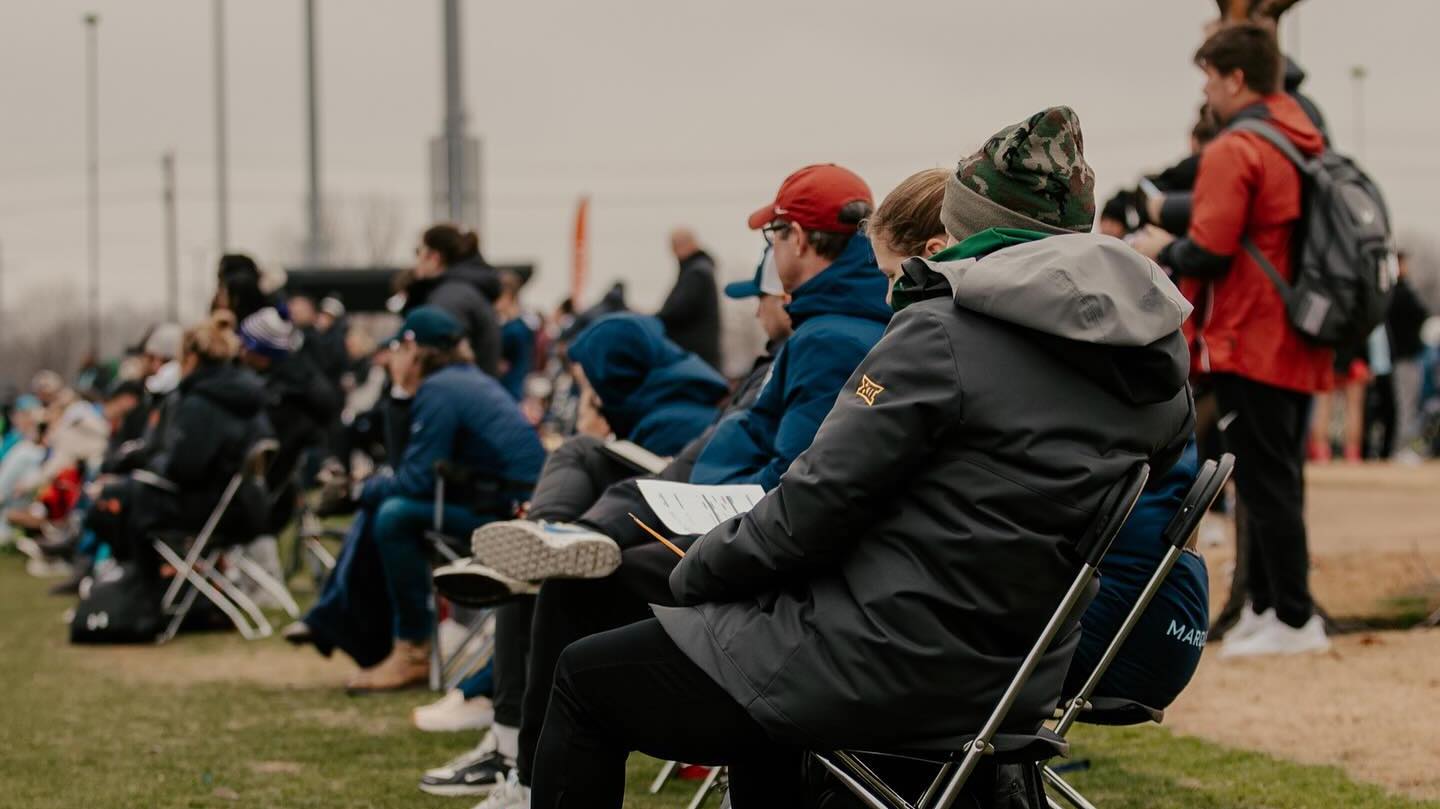

Last fall, Whitman senior and football player Nate Sullivan was in touch with coaches at Virginia Tech, hoping for an opportunity to play for the program. The school then told him there was no spot for him on the team due to uncertainty surrounding the transfer portal and roster size. This kind of rejection is increasingly common in today’s recruiting landscape because of new roster limits expected to go into effect in July, which schools have already begun preparing for.
The roster limits vary by sport and are part of the House v. National Collegiate Athletic Association (NCAA) settlement, which will overhaul the current system of college sports. Former Arizona State University swimmer Grant House and former Texas Christian University women’s basketball player Sedona Prince filed the lawsuit to seek damages for athletes who couldn’t profit from their collegiate careers. The settlement addresses three antitrust class-action lawsuits concerning student-athlete compensation against the NCAA, allowing colleges to pay their athletes directly through revenue-sharing and removing scholarship limits in favor of roster restrictions. For almost half of NCAA sports, the current average roster size exceeds the new limits, and experts expect football and baseball teams to be the most affected.
The roster size modifications have sparked significant controversy. For instance, California judge Claudia Wilken refused to approve the settlement due to her concerns about the new rules. NCAA attorneys recently announced revised terms that Wilken has yet to approve, which would allow athletes and recruits who lost their spots to return to their teams. These athletes will remain exempt from roster limits for the rest of their college careers, and schools are not obligated to reinstate them. Nonetheless, the plaintiffs’ lawyers have argued that the changes are too little and too late.
Senior baseball players Sammy Berman and Charlie Buckles committed to the University of Maryland and Florida State University before the House settlement’s confirmation. Berman decided to stay in Maryland after receiving several D1 offers, while Buckles was in touch with numerous Power Four programs before committing to Florida State as a rare out-of-state recruit for the Seminoles.
“I know kids who, before they changed the rules, committed freshman year,” Berman said. “It will just be unfortunate for those kids who have been committed so long to lose a spot.”
Buckles also said he knew people who had their offers revoked. The roster size for college baseball teams will go from an average of 41.9 in the 2023-2024 season down to 34, which led to many cuts. Buckles attributed his retention to his positional versatility, which Berman offers as well.
“I’m going to be there as a two-way [player], which is really helpful with the new roster sizes,” Buckles said.
Sullivan, however, didn’t enjoy the same security as Berman and Buckles had, having to look for other options after Virginia Tech couldn’t guarantee him a spot on the football team. He received two D1 scholarship offers and committed to Villanova University, where roster restrictions weren’t an issue as the program was already under the new 105-player cap.
Sullivan, Berman and Buckles all expressed some level of opposition to the roster limits, particularly surrounding the elimination of walk-ons, rescission of players’ positions and increased reliance on the transfer portal.
With both of his offers coming after the House settlement’s preliminary approval, Sullivan experienced the effect of the new roster sizes firsthand.
“[The limits] make it very hard for high schoolers to get recruited,” Sullivan said, “because many coaches would rather take transfers with college experience than develop a high school kid.”
Villanova is an outlier in this sense, as defensive coordinator Ross Pennypacker and assistant coach David Riede said that the school will continue to focus on recruiting and developing high school players like Sullivan despite the new rules.
Not all D1 teams will have to adhere to the new rules. Teams in Power Four conferences — Southeastern Conference, Big 10, Big 12 and Atlantic Coast Conference — must institute roster limits and revenue-sharing, while other teams and conferences have the option to participate. Since many smaller schools can’t afford to pay for their players, they will likely choose to opt out.
Maryland, Florida State and Villanova will all compensate their athletes starting next season and schools will finalize the deals once athletes arrive on campus in the fall.
According to Riede, the logistics of student-athlete pay remain an issue.
“Our athletic department will determine the revenue-sharing program for our student-athletes if the House settlement passes,” Riede said.
While these players will have to wait until fall for their schools to pay them, they can still sign brand deals. Buckles has already taken advantage of this by signing an endorsement agreement with Dick’s Sporting Goods.
The House settlement has reshaped college sports, but Berman, Sullivan and Buckles were able to beat the odds and get a shot at the D1 level.
“As someone who considered trying to walk on at a bigger school, it’s sad to see that those opportunities will no longer exist,” Sullivan said. “There have been hundreds of all-time great walk-ons like JJ Watt, Clay Matthews and Baker Mayfield, all who in today’s game wouldn’t be given the chance to play in college.”
-

 College Sports2 weeks ago
College Sports2 weeks agoPortal Update – Basketball and Gymnastics Take Hits
-

 Rec Sports3 weeks ago
Rec Sports3 weeks agoThe Program, a New Basketball Training Facility, Opening in Greenpoint This September
-

 College Sports2 weeks ago
College Sports2 weeks agoPortal Update – Basketball and Gymnastics Take Hits
-

 Professional Sports2 weeks ago
Professional Sports2 weeks agoJon Jones answers UFC retirement speculation as fans accuse champion of 'holding the belt …
-

 NIL1 week ago
NIL1 week ago2025 NCAA Softball Tournament Bracket: Women’s College World Series bracket, schedule set
-

 Health2 weeks ago
Health2 weeks agoBYU women's basketball guard injures ACL twice
-

 Youtube3 weeks ago
Youtube3 weeks agoTHE FINAL CALL: Golden State Warriors 2021-22 NBA Champions
-

 Youtube2 weeks ago
Youtube2 weeks agoXavier Legette taught Marty Smith his signature celly
-

 Youtube3 weeks ago
Youtube3 weeks agoThe WILDEST Round 1 NBA Playoff Endings of the Last 25 Years
| Pt. 1
-

 Youtube3 weeks ago
Youtube3 weeks agoThey need to add a gorilla next
(via @zackystrong.pt/TT)









 | May 25, 2025
| May 25, 2025


























